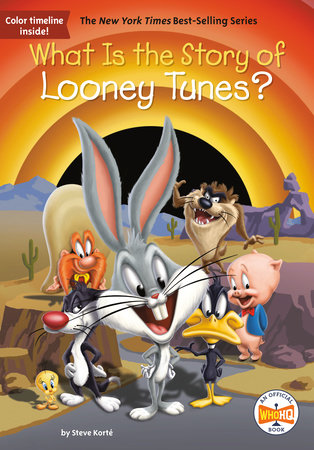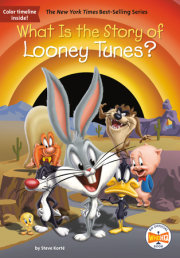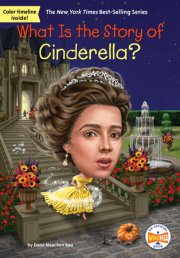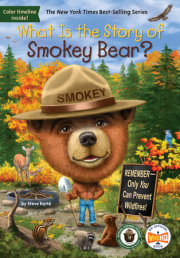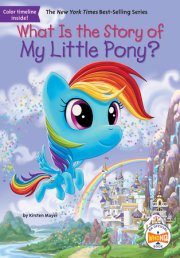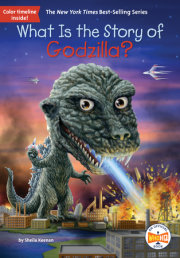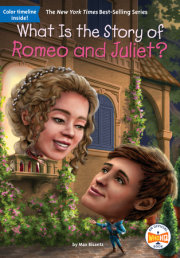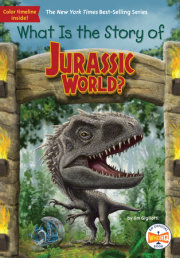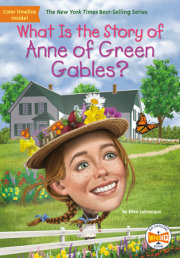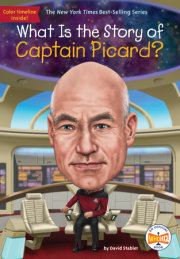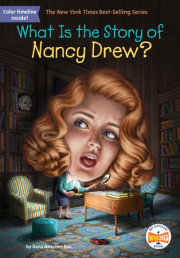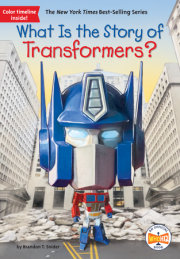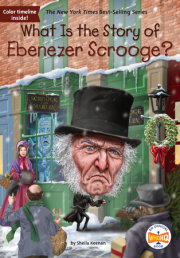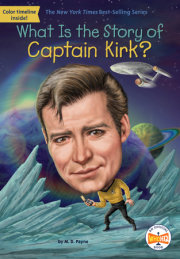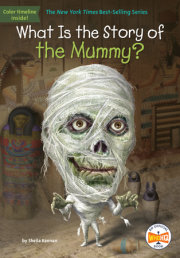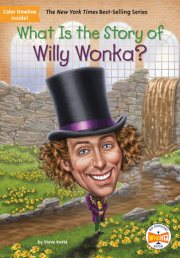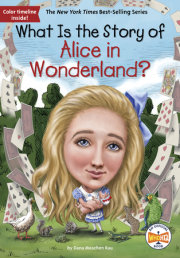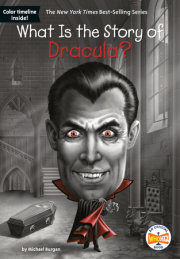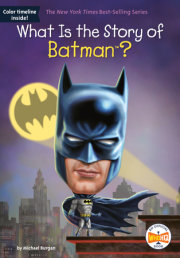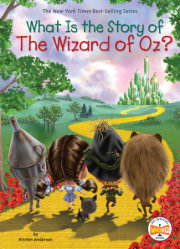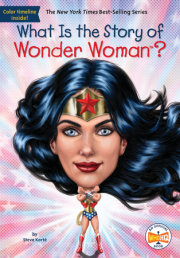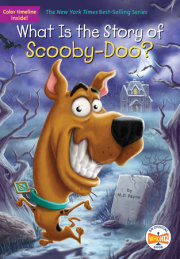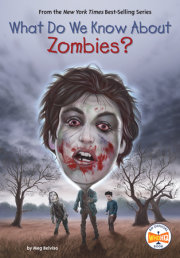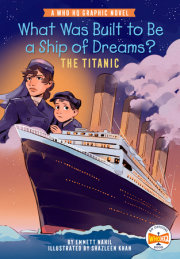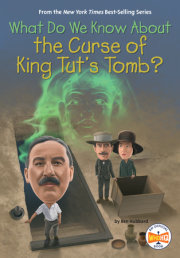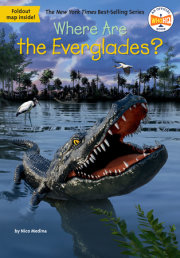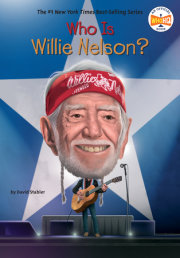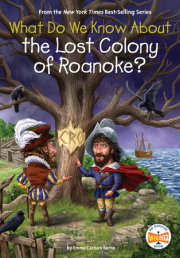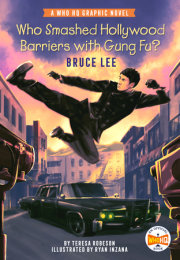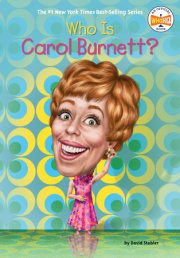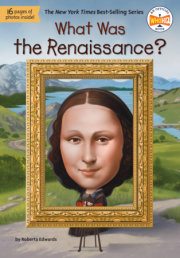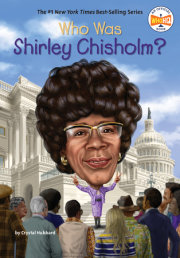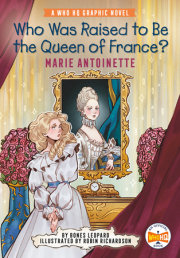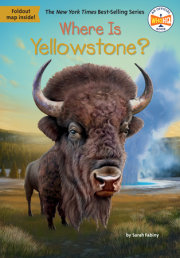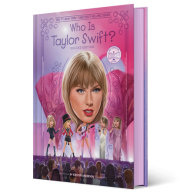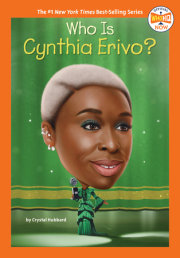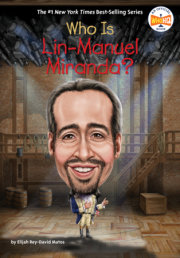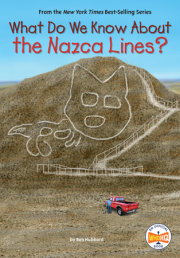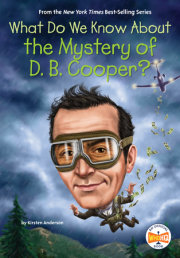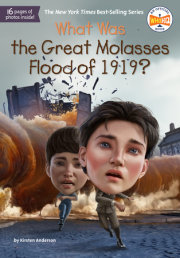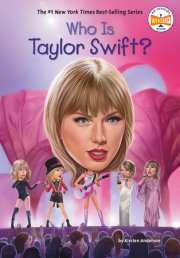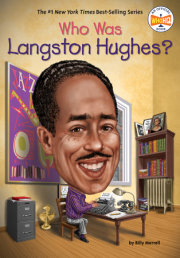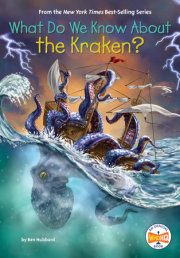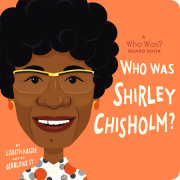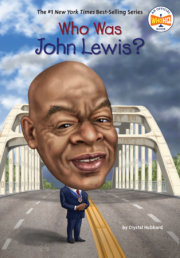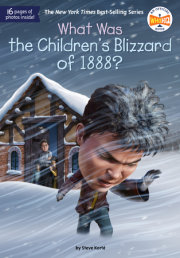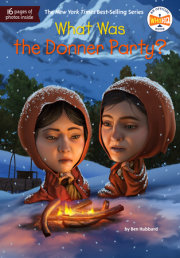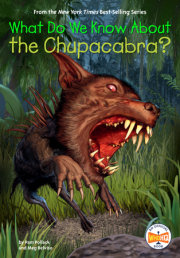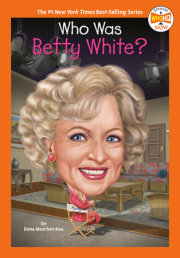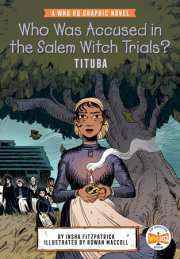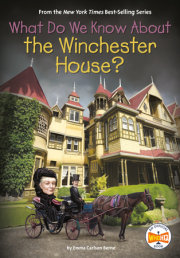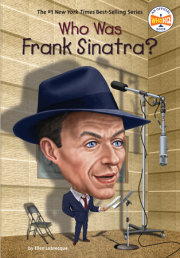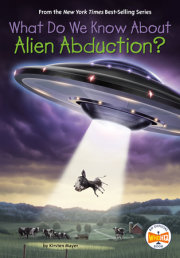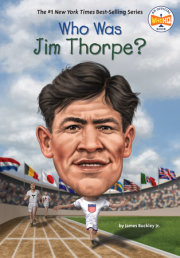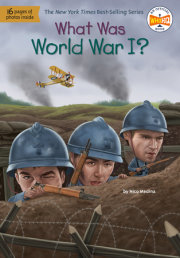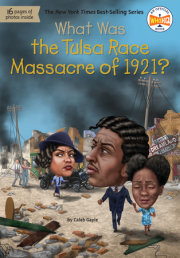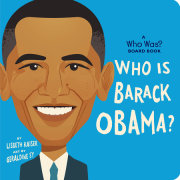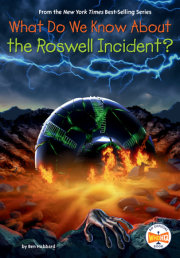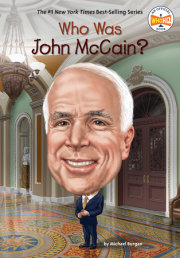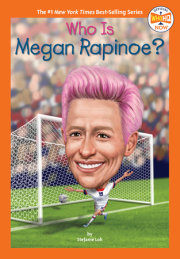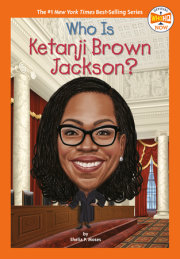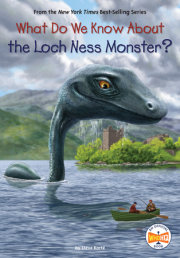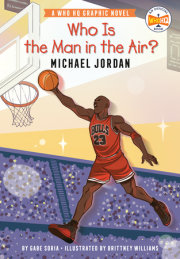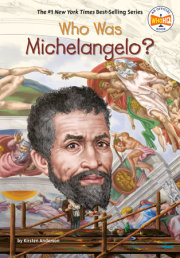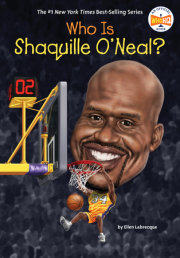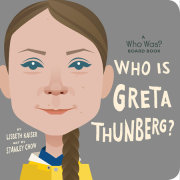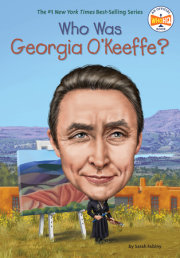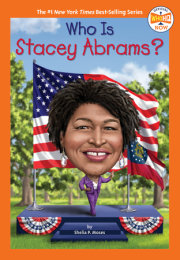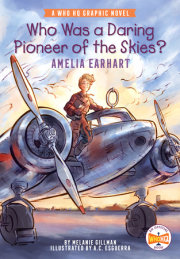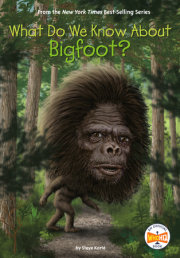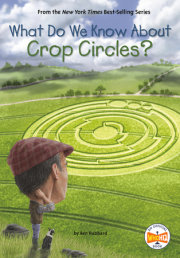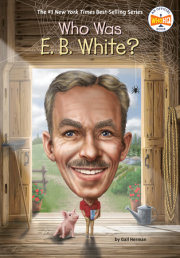What Is the Story of Looney Tunes? Across America in October of 1937, adults and kids settled in to their theater seats to enjoy a feature film from the Warner Bros. movie studio. Before the feature film, they watched the coming attractions and a short movie with news events from around the world. There was also a black--and--white cartoon called
Rover’s Rival. The star of the cartoon was a small, plump pig named Porky. He was dressed in only a jacket and bowtie, and he stuttered when he spoke.
Rover’s Rival begins with Porky Pig reading a book called
New Tricks to Teach Your Dog. Porky is determined to teach his old dog, Rover, some of those new tricks. Sadly, Rover is so old that he can barely move or even hear what Porky is saying. But then a new puppy comes along who is eager to please Porky. Unfortunately, a game of fetch goes wrong when the puppy retrieves several lit sticks of dynamite and delivers them to Porky. It’s up to Rover to grab the dynamite and move it far away from Porky before it explodes. Rover saves the day, and the story ends happily.
But that wasn’t the end of the cartoon. In the closing seconds, as music played in the background, the screen was filled with the image of a giant drum that was labeled “Looney Tunes.” Suddenly, Porky Pig burst through the drum! Movie audiences jumped in their seats. With a wave of his hand, Porky stammered, “Th--th--that’s all, folks!”
It was at this moment that Porky Pig became a star. And the “Looney Tunes” went on to become some of the funniest and most beloved cartoons of all time.
Chapter 1: Drawings That Move Animated movies are a series of filmed images—-sometimes drawings and sometimes objects, such as clay models. When the filmed images are shown quickly one after another, it appears that they are moving. Short animated movies are also known as cartoons, and they have been around since the late 1800s.
In 1906, the Vitagraph movie studio released the first American animated cartoon. It was a three--minute silent film called
Humorous Phases of Funny Faces. It showed a series of drawings that somehow seemed to come to life, including the faces of a man and woman smiling and frowning. The drawings weren’t fancy, and there wasn’t much of a story. But this cartoon inspired other artists to try and create new animated films.
One of those artists was a newspaper cartoonist named Winsor McCay. In 1914, he created the first cartoon character to become a star. The name of the cartoon was
Gertie the Dinosaur, and its star was a giant brontosaurus named Gertie. McCay made more than five thousand drawings to create just this one cartoon. The advertisements for
Gertie read, “She eats, drinks, and breathes. She laughs and cries. Dances the tango. Answers questions and obeys every command. Yet she lived millions of years before man inhabited the earth and has never been seen since!”
During her cartoon, Gertie bows to the audience, gobbles down a tree, and plays with a woolly mammoth. Audiences fell in love with Gertie. And McCay’s cartoon inspired a whole generation of artists to create even more amazing animated films.
When many people think of animated movies, they think of Walt Disney. Although Disney did not invent animated films, his movie studio came up with new ideas that changed the way cartoons were made. In 1919, when Disney decided to become an artist and form his own advertising company, he and another artist named Ub Iwerks began making short animated movies.
They created a series of
Alice in Wonderland cartoons that were somewhat successful, and the Disney animation studio grew to include more artists. Walt Disney found his first big success in 1927 when he released a cartoon starring Oswald the Lucky Rabbit. Oswald was a big hit, but a year later, Disney had an even bigger hit. His new character had round ears and a long, thin tail. His name was Mickey Mouse.
In 1928, Mickey changed the very nature of cartoons. That was the year he starred in
Steamboat Willie, the first animated cartoon with talking characters. Not only did Mickey speak, but audiences also heard sound effects and music in the cartoon.
Before 1927, movies were filmed without sound. Instead of spoken words, written dialogue would appear on the screen. When the movies were shown in theaters, live music would usually be provided by a piano player or sometimes a full orchestra. That changed when the Warner brothers—-Harry, Albert, Sam, and Jack—-released a feature film with sound called
The Jazz Singer from their movie studio, Warner Bros. Pictures.
The movie starred a famous actor and singer named Al Jolson, who could be heard speaking and singing for the first time in a movie. Audiences went wild for what were then called “talking pictures” and demanded more of them. Almost immediately, silent movies disappeared and were replaced by ones with recorded voices, sound effects, and music.
The sound technology of
The Jazz Singer changed movies forever. And with Mickey Mouse leading the way, sound cartoons were about to explode in popularity.
Chapter 2: Launching Looney Tunes Adding sound to animation made Mickey Mouse into a worldwide movie superstar. But Walt Disney and his animators weren’t content with Mickey’s success. They wanted each new cartoon to look better than the last one.
The Disney artists created several more popular characters, including Donald Duck, Goofy, and Pluto. In 1929, the studio launched a series they called “Silly Symphony” that did not feature Mickey or any of the other popular characters. The first cartoon in this series was
The Skeleton Dance, a cartoon of four human skeletons dancing around a graveyard.
Flowers and Trees, the first full--color Silly Symphony cartoon, came out in 1932.
In 1937, Disney stunned the movie industry by releasing the first full--length animated feature film,
Snow White and the Seven Dwarfs. It was Disney’s biggest success to date.
Other movie studios had watched Disney’s success and launched their own animated cartoons and cartoon series. Movie theaters now had plenty of cartoons to show, starring Popeye the Sailor, Betty Boop, Krazy Kat, and dozens of other characters.
Warner Bros. Pictures didn’t have an animation studio of their own, but after the success of
The Jazz Singer, they wanted to make cartoons, too. They made a deal with a movie producer named Leon Schlesinger to create a series of cartoons with sound that would be called “Looney Tunes.” Mr. Schlesinger didn’t know a thing about making cartoons, so he hired two former Disney animators named Hugh Harman and Rudolf Ising. The two men created a cheerful cartoon character named Bosko. With the help of a few more artists, they soon had a cartoon ready for Warner Bros. It was
Sinkin’ in the Bathtub, and when it was released in 1930, audiences loved it.
Warner Bros. was so happy with the success of
Sinkin’ in the Bathtub that they rushed to make more Looney Tunes cartoons. The studio also added a second series called “Merrie Melodies.” Warner Bros. was now determined to become Disney’s biggest competitor.
Copyright © 2020 by Warner Bros. Entertainment Inc.. All rights reserved. No part of this excerpt may be reproduced or reprinted without permission in writing from the publisher.

